If you hold an old letter up to a lamp, you might see a filigree of light (in the shape of a crown, a coat of arms or even a unicorn!) appearing in the paper. These are watermarks – images imprinted in the sheets during paper manufacturing.
In this video you can see how paper is made by hand in an English mill as late as the 1970s. Watermarks served as trademarks of the paper mills or to distinguish different batches or grades of paper. Therefore, watermarks nowadays can be used to investigate the quality of historic paper, identify production mills, their location or the paper date.
Some exciting projects based on the study of watermarks include the WIRE project, which analysed and classified watermarks in Rembrandt’s edged prints, revealing new information about the artist’s creative process. The watermarks in Picasso’s drawings have also been studied, as well as those in the Gutenberg Bible, Shakespeare’s original manuscripts, 16th-century Italian maps or ancient music notation.
Watermarks are, however, difficult to visualise and record, as they are quite faint and often obscured by the presence of text or images on the paper.
Traditionally conservators in The National Archives’ Collection Care department recorded watermarks in historic papers by hand-tracing them on transparent paper. Beta-radiography, a more precise technique, has been used since the 1950s to record images of watermarks; however, it has disadvantages such as limited access for many organisations, long exposure times and health and safety issues.
New methods to record watermarks have emerged recently. For example, the Conservation and Science department of Rijksmuseum is experimenting with transmitted light photography, low energy X-rays, electron radiography and thermography. At the Collection Care department of The National Archives, we are using our new multispectral imaging (MSI) system to investigate the materiality of historic documents in the collection, illuminating them with a range of LED lights (ultraviolet, visible or infrared radiation) and capturing the transmitted light, reflected radiation or generated luminescence with a very high resolution camera (150 megapixel).
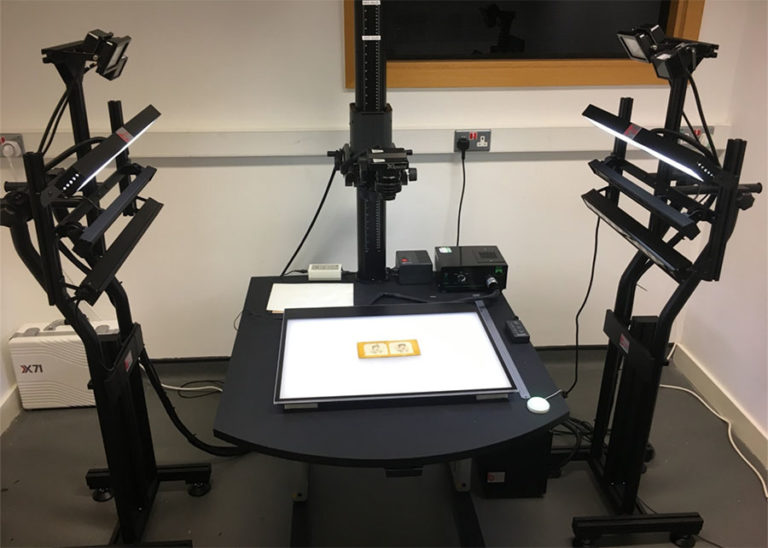
The specific imaging technique that is proving most useful to enhance the visibility of watermarks is to process two visible images of the document in a ‘phase-shift’: one image acquired with reflected light and another one with transmitted light from a backlit table. The software performs an equalisation operation and matrix division and, by optimising the ratio between the two images, it is possible to enhance the visibility of the watermark and to reduce the interference of the ink in the paper. This method is allowing us to explore and record watermarks in our collections in an easy, safe and quick way, revealing the great variety of marks present in the documents.
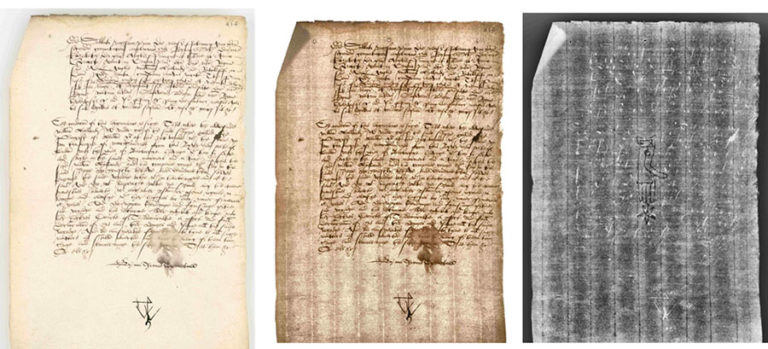
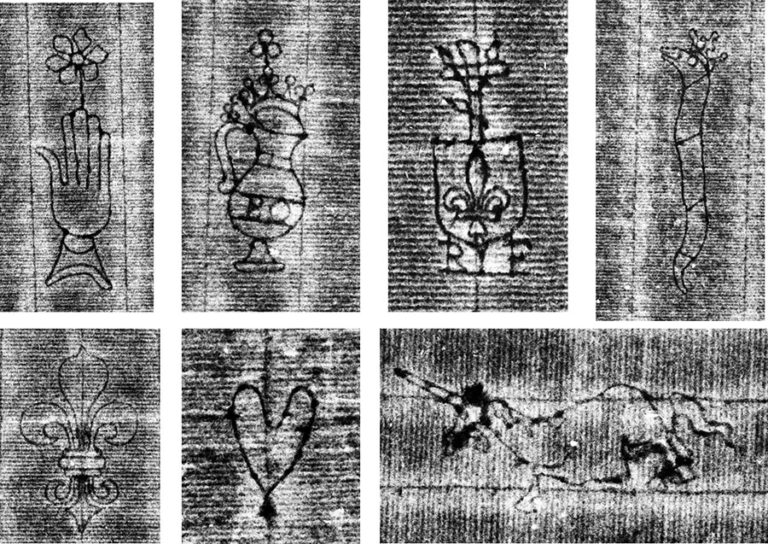
The next step, once we have identified an efficient imaging method, is to organise the watermarks images in a database and make them searchable. Some very comprehensive watermark databases already exist. For instance, in 1907 Charles Moise Briquet published ‘Les Filigranes‘, a historic dictionary (now available online) with reproductions of 16,000 watermarks between 1282 and 1600, from tracings he made in archives in France and other European countries.
There are other watermarks catalogues accessible on the web, but all of them searchable by keyword or textual description, which can be challenging if the user is not familiar with the conventional classification of watermarks, the terminology of paper historians or even the language in which the database has been designed.
To start bridging this gap, we are looking for new methods to visually search the digital collection of watermarks. As an experiment, we turned to the work of the University of Oxford’s Visual Geometry Group, in particular its free and open-source tool VGG Image Search Engine (VISE), which has been proven to be successful in tasks such as matching illustrations from early printed books.
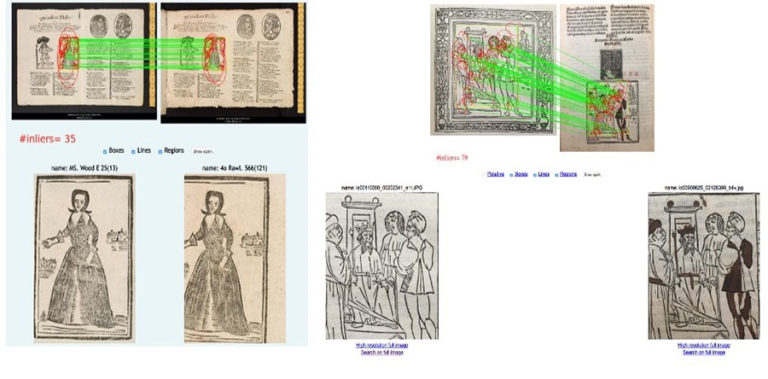
VISE uses SIFT features, apparent variations in texture and contrast across images, to match identical (or very similar) regions within images. These features are typically resilient to changes in the size or rotation of an image; its angle when viewed head on; its surroundings; and – to some extent – changes in lighting conditions.
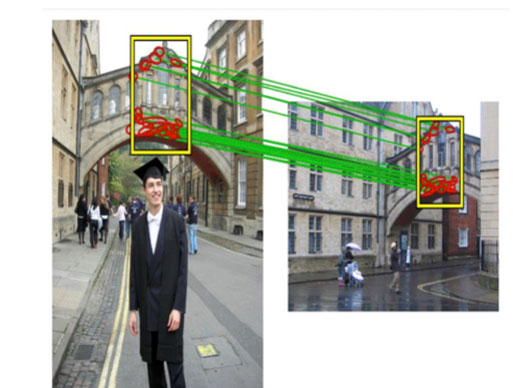
VGG’s VISE tool can process many thousands or even millions of images, permitting almost-immediate retrieval. The scenario that this research explored was one in which a user might upload an image of an unknown watermark to compare it against an index of known watermarks. VISE would output a ranking of the best visual matches of similar watermarks of known date and origin against the query image: the user can then select a matched image to see how it compares with the query.
Initial results showed that VISE was successful in matching watermarks imaged as phase-shifts and beta-radiographs, showing the strengths of these imaging modes.
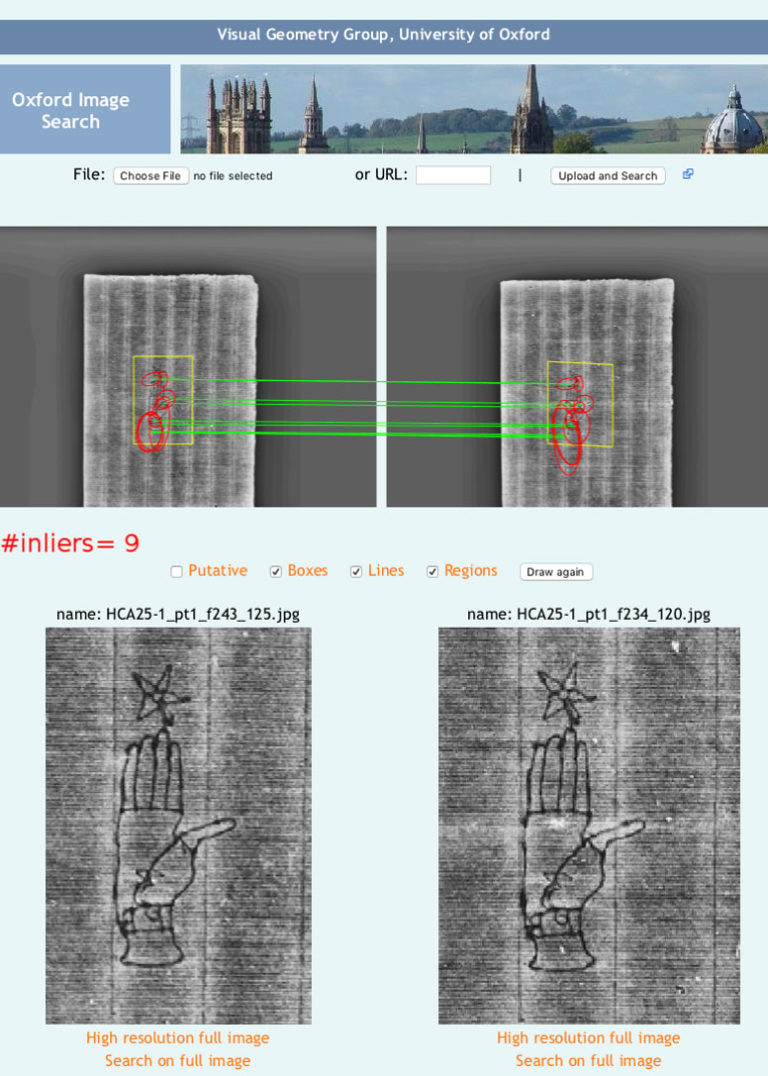
However, VISE’s performance across imaging modes was disappointing. For instance, it was unable to match the phase-shift images against the rubbings and tracings of watermarks, common in existing large collections of watermarks.
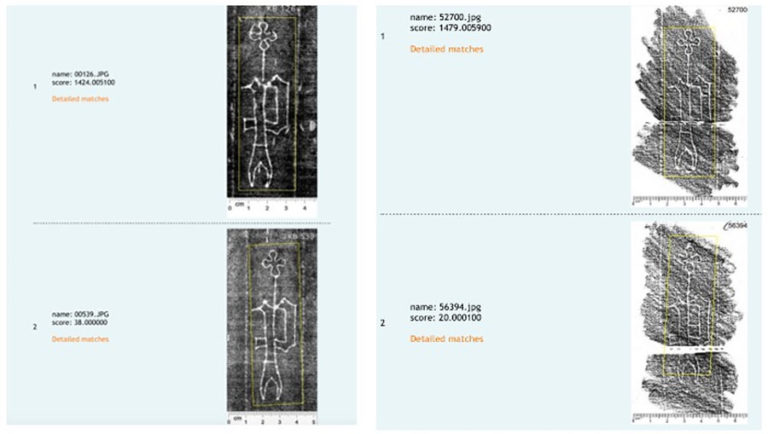
Our initial research in this area was presented at the 5th International Conference on Watermarks in Digital Collections at University College, Cork in 2019. The slides from many of the presentations can be seen here. A particularly advanced application of computer vision to the watermark challenge was presented by Ilaria Pastrolin from the École Nationale des Chartes, Paris. This paper reported on some promising research employing neural networks: the team behind the research has made their results and training data available, and created a web application for others to try. Many computer vision tasks have benefited from the open availability of datasets, models and demos: the matching of watermarks is also likely to benefit from this approach.
Watermark retrieval remains a challenge, in particular around the variable condition of the original document. The image of the watermarks is often obscured by the presence of text in the document or by the poor condition of the paper, which compromises the visual search. Other features in the paper (such as chain-lines) could repay investigation, as could the extent to which watermarks change over the course of their working lives, or the extent to which individual sheets of paper made on the same mould may differ. Such variables highlight the necessity for computer-aided research to be carried out in collaboration with subject specialists, and with an appreciation of the complexities of the historical materials preserved at The National Archives and elsewhere.
Lucia Pereira Pardo is Senior Conservation Scientist, Collection Care Department, at The National Archives. Giles Bergel, from the University of Oxford’s Visual Geometry Group, is a member of the Seebibyte project.
Thank you for making a most useful advance and for making the idea available.
I am trying to put some dates to the printing of various JMW Turner’s prints, some of which are on watermarked paper.
Your phase-shift imaging may be a first step by grabbing a useful image of the (partial) watermarks.
Your relevant link above to “The specific imaging technique ” is dead. https://www.book2net.net/index.php/en/products/digitization-camera/multispectral/making-of/watermarks
Can you share the method statement for generating the phase-shift image?
I have found that aligning the images of the same object from different imaging methods to be iffy, but is helped (a bit) by first removing distracting noise of staining etc. A reflection spectrophotometer and a range of photographic filters would help.
Dear Velson,
Thank you for your comment. Our MSI system uses an algorithm to automatically obtain the phase shift images, so it is a bit of a black box (it does a matrix division with a 0.37 threshold). However, I have done some tests with widely available open source image processing software (Image J) and it is possible to obtain good results manually. I subtract the reflected and transmitted images, transform the resulting image to grayscale and adjust the levels. I have found that just by doing this the contrast of the watermark, chain and laid lines improves considerably. As you say, the limiting factor is to have well aligned images, so what I would recommend is to set up the document on a lightbox (or lightsheet) and acquire the reflected and transmitted images without moving the camera or the document, nor refocusing between shots. I hope this helps.
I have an artists sketch showing a panoramic view of an “event” possibly in open ground on a heath etc. 8″ x 7.5″.
The watermark is an elaborate Fleur-de-lis design, followed by possibly a I or J & then M.
Underneath is 1823
The artist has an accomplished hand, and I’m trying to check out the paper and the artist.
Dear Lucia,
I’m professor at the Federal University of Rio de Janeiro, and at this moment I’m a consultant in a project to re-catalog all cartographic documents from the Itamaraty Mapoteca (Brazilian Ministry of Foregneir Affairs}.
In this way, we examine a huge amount of documents, mainly from the 18th and 19th centuries, from which we can extract interesting watermarks. One of them showed the figure of a horse and the word “bucefalus”.
Unfortunately, we were unable to find this watermark in our references, so we ask for your help.
Yours sincerely,
Paulo Menezes
I have a letter from October 7, 1844 from Mason, Ingham co, Michigan that has a watermark on rag-type paper showing that it was from the Ann Arbor Mill. It shows an arc Ann Arbor with two crossed swords and Mill down below. The only information I have about the mill says they know it existed but they don’t know the name of the mill or the dates it existed. The first mill in Michigan was at Raisin, and this would be the next mill in Michigan. Can you tell me anymore information about this mill and other papermaking mills in Michigan in the years around and after 1840.
Thank you
I have a watercolour which has the watermark, “BUDGEN & WILMOTT 1809”. I should be grateful for any information or reference to this company, names of people involved, dates, &c